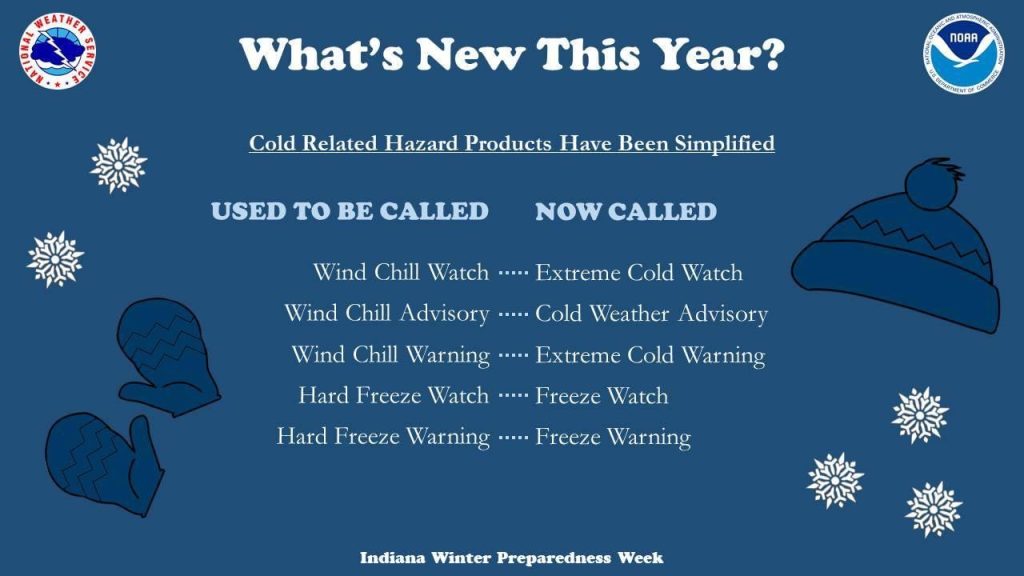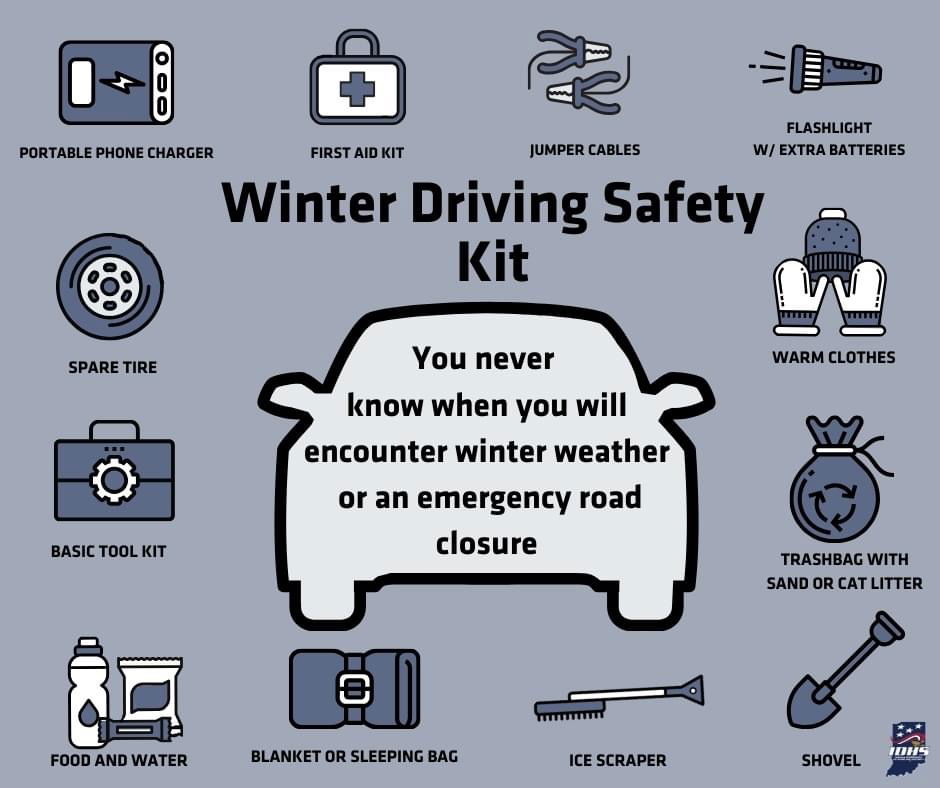The National Weather Service has issued predictions for the beginning weeks of January, stating that community members should expect a transition to colder conditions throughout the week this week with high temperatures only in the 30s today and tomorrow to highs in the 20s over the weekend with single-digit wind chills possible.
The service further stated that it has a high confidence for much below normal temperatures in the timeframe of Jan. 5 through Jan. 10 with a pattern that would favor the potential for wintry precipitation and heavy snow. Exact details are not known at this time.
The National Weather Service announced new alerts for the upcoming winter season, and the Indiana Department of Homeland Security released some information regarding winter driving safety kits to ensure community members have all of the knowledge they need to stay warm.
New this season, the weather service has released updated alerts for winter weather to utilize simpler language. The service stated that “windchill watch” has been renamed to “extreme cold watch,” “wind chill advisory” has been renamed to “cold weather advisory,” “wind chill warning” has been renamed to “extreme cold warning,” “hard freeze watch” has been renamed to “freeze watch” and “hard freeze warning” has been renamed to “freeze warning.”
The Indiana Department of Homeland Security released information regarding winter driving safety kids that may be utilized in the event of an accident or emergency during extreme winter weather.
The department recommended preparing a kit with a portable phone charger, first aid kit, jumper cables, flashlight with extra batteries, spare tire, warm clothes, basic tool kit, trash bag with sand or cat litter, food and water, shovel, ice scraper and a blanket or sleeping bag.
The department further recommended checking tires, wipers and batteries consistently to ensure they can handle snow and ice as well as checking road conditions before traveling and slowing down on slippery roads.
Boone County Sheriff’s Office Animal Control Officer Julia Hole provided tips to ensure the safety and well-being of animals during the winter months from household pets to livestock in extreme weather conditions.
Outdoor Time:
Hole encouraged owners to limit time spent outdoors by considering short and more frequent walks. For outdoor cats and dogs, Hole recommended keeping them inside or providing a dry, draft-free and insulated shelter that will protect the animals from the winter wind chills and the elements, such as snow and ice. For livestock, Hole recommended providing sturdy shelter for livestock with insulated barns with ventilation if possible.
Hydration and Nutrition:
Hole stated that pets can easily become dehydrated in the winter as they can in the summer, and she recommended owners to check water consistently to ensure it is not frozen as pets and livestock need access to fresh water. Hole also recommended owners to keep meals nutrient-dense, especially for active outdoor pets and livestock throughout the winter months.
Health Issues:
Hole recommended owners to monitor for illness as cold and damp conditions may increase respiratory issues. Signs of issues ay include coughing, nasal discharge and labored breathing. Hole recommended owners to ensure vaccinations and deworming medicines are up to date, especially for livestock as the stress from the cold weather may impact immunity.
Frostbite and Hypothermia:
Hole stated that owners should monitor their pets for frostbite and hypothermia, especially those who remain outside during extreme conditions. Frostbite may be located in the paws, ears and tail, and signs of frostbite may be discoloration, swelling and cold skin. For hypothermia, signs include shivering, lethargy and weakness. Vets should be contacted immediately if signs are spotted of the two ailments.
Feet Protection:
Hole stated that owners should wipe their pet’s paws after being outdoors as ice and salt may irritate paw pads. A pet-safe balm should be used before and after walks to prevent irritation and cracking, and owners should utilize pet-safe ice melt around their homes. For livestock, Hole recommended to check, clean and trim hooves regularly as muddy conditions can lead to thrush and cracking while icy, cold and rough ground can cause pain and injury.
Clothing and Bedding:
Hole recommended utilizing sweaters and jackets for dogs with thin coats, smaller dogs or elderly dogs and booties for all pawed animals traveling outside to protect paw pads. Beds should be kept away from drafts, and raised beds or heated pet pads are recommended to add extra warmth. Hole recommended the use of dry bedding for animals, specifically straw or shavings, to insulate the animals from the cold and help them retain body heat. Lastly, Hole recommended cleaning stalls frequently to ensure that bedding is dry, which reduces exposure to moisture, ammonia, cold and damp living spaces.



